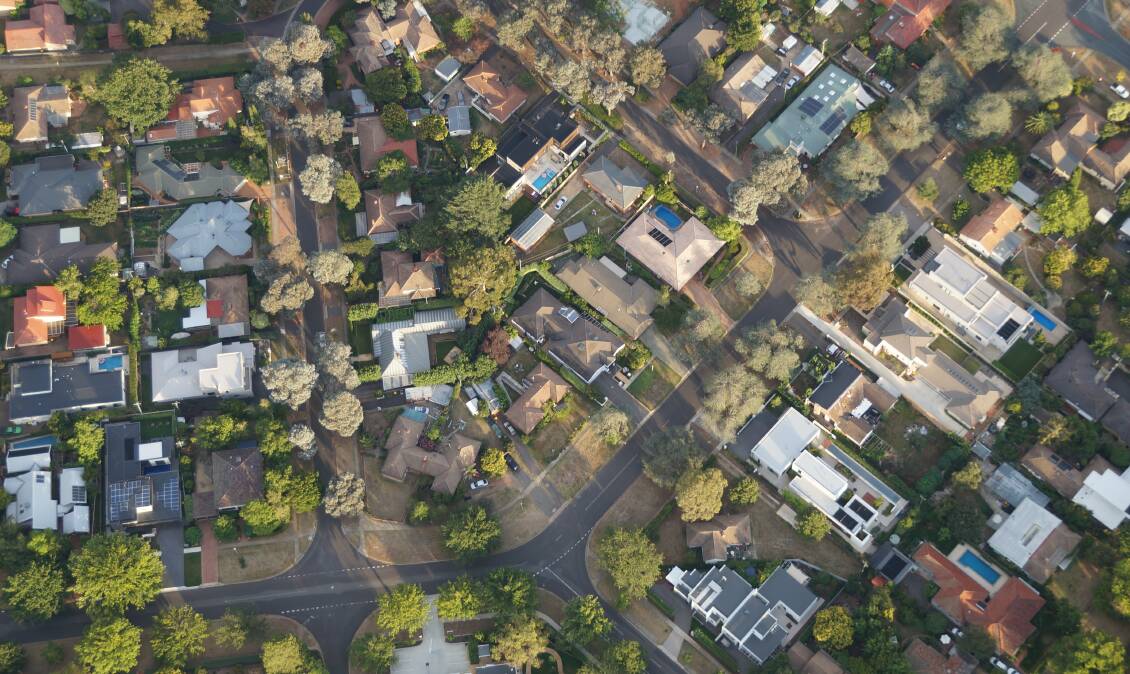A planning system change to allow small houses to be built on many blocks in established Canberra suburbs is expected to lift land values on eligible blocks by more than 20 per cent.
In Deakin, the change will add $340,000 to the unimproved value of an eligible RZ1 block if it is unit titled, the highest expected increase in an analysis completed by the ACT government.
The analysis looked at the impact on unimproved values for blocks that took advantage of the change.
Eligible blocks in the suburb would then on average be worth close to $1.7 million.
Ainslie property owners would have a $247,222 bump to their unimproved value if they unit titled their eligible block to allow a dual occupancy development.
But suburbs further from the city centre stand to gain less in unimproved value with the dual occupancy changes.
The government estimated the value of an eligible block in Chisholm would rise by $86,6678 to $566,667.
Eligible blocks in Coombs would have the smallest percentage increase, rising 13.78 per cent. The blocks would on average rise by $103,333 in value to $853,333, the government estimated.
The government also estimated the cost of building a 120-square-metre house with a 30-square-metre garage would cost between $456,000 and $681,000, depending whether it was a low, medium or high specification project.

The figures are revealed in briefing documents prepared when the ACT government was considering changes to the planning system. The documents were released under freedom of information laws.
An increase in unimproved values would eventually affect the general rates bill, which is calculated based on the unimproved value of a property spread out over a five-year average.
Homeowners could potentially pay smaller rates bills if they sell the unit titled secondary dwelling, reducing the size of their block.
But the property owner would first need to pay a lease variation charge and construction costs.
New dual occupancies will be exempt from stamp duty for two years in an effort to encourage more second dwellings, but property owners still face either a fixed $40,000 lease variation charge of 75 per cent betterment tax.
Codified charges vary between suburbs, with higher charges in more expensive suburbs. An accredited valuer will be required to determine the alternative 75 per cent tax, with the choice available until June 30, 2026.
Chief Minister Andrew Barr and then planning minister Mick Gentleman in September announced larger blocks originally zoned for single dwellings would be eligible for unit titling to allow a "modest" secondary house.
The rules apply to any block 800 square metres or larger in the RZ1 zone, which covers vast swathes of Canberra's suburbs.
Mr Gentleman said that the aim was to increase the supply of housing in Canberra "but keep it as an attractive place to live".
A 2017 government discussion paper said more than half of Canberrans surveyed wanted more dual occupancies in their area. At the time, RZ1 rules covered more than 80 per cent of Canberra's residential land.
The rule change to encourage more secondary dwellings in Canberra's suburbs will not deliver more housing near shops and transport links with many blocks unsuited to a second home, an analysis of housing blocks has suggested.
The majority of the 800-square-metre blocks, where owners will be able to construct second dwellings up to 120 square metres and unit title the properties, are at the edge of Canberra's suburban areas, away from key services and transport links.
The analysis showed there were 40,245 blocks covered by the new rules. The ACT government has said it expected the change would cover almost 45,000 blocks in Canberra.
The value of Canberra homes fell slightly over the last month while the value of residential property across the country increased, drawing an end to a year in which the capital's property market remained largely flat.
Figures released by CoreLogic this week showed Canberra's residential property values ended the year up by 0.5 per cent.
But residential properties in the ACT shed 0.1 per cent in value in December, while nationally property values grew by 0.4 per cent.







